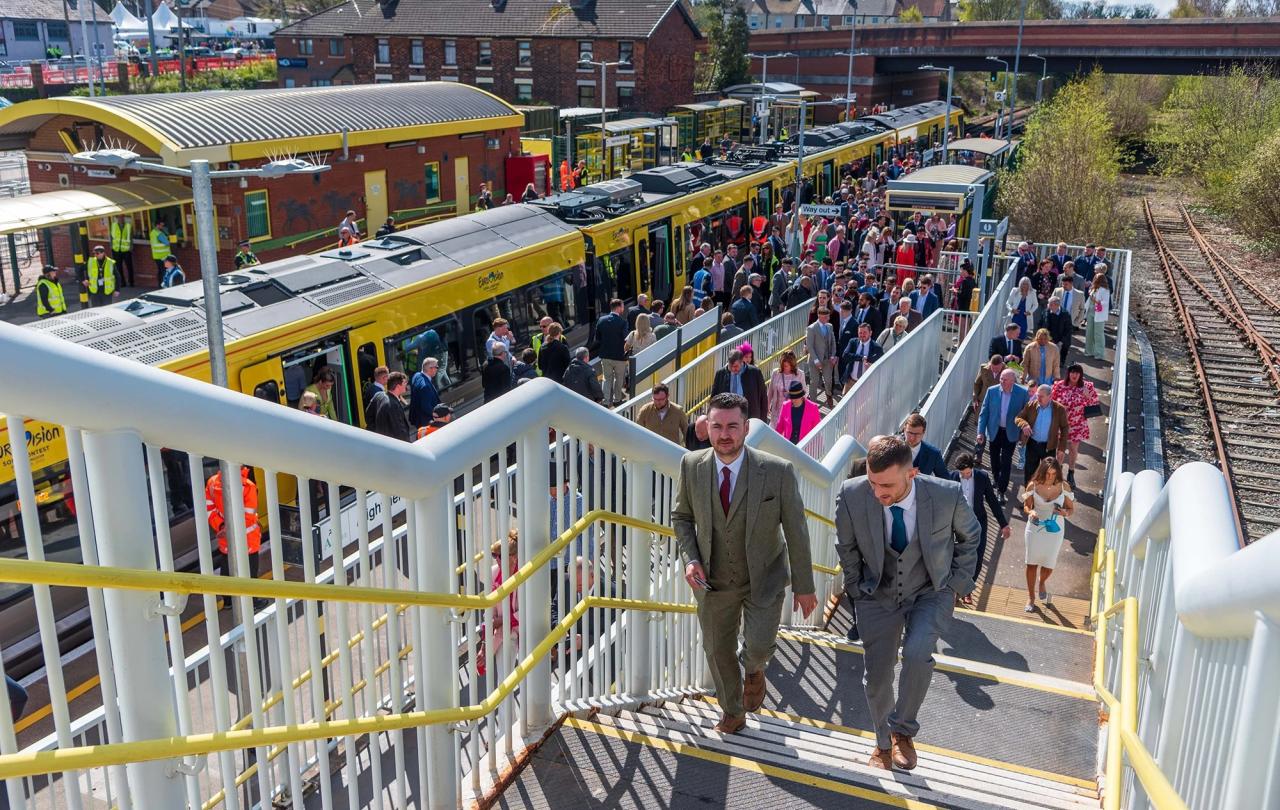
I love watching the periphery of events. Frequently I will be at a gig and find my eye and mind drifting to what is going on at the fringes of the stage. Security distributing water to the thirsty souls of the mosh pit whilst removing the crowd surfer of crushed individual (who invariably rushes back through the stadium to dive back into the fun). You have the semi interested standing at the back trying not to let a good gig interrupt their conversation. You see the road crew retrieving dropped mics, endlessly swapping guitars and nervously following the antics of the lead performers. It is all part of a community drawn together for a couple of hours, from the passionate obsessive to the mildly involved all being sucked into the occasion.
And for over 30 years I have watched the very fringe of the world famous Grand National event. My wife has taught at a school about half a mile from the famous racecourse so twice daily we pass it by to and from her workplace. I have been to corporate events, our diocese has even held some there, in the stands so have overlooked the course but I have never nor will I ever attend the race meeting.
But I am fascinated to look in and see the build-up.
It starts around February as you start to see the white hospitality marquees being erected. You get the big advertising wraps proudly displaying the meeting’s sponsor. Then this week the TV outside broadcast vans turn up, signs directing people to the correct car parks and drop off points appear and the sense of the scale of operations looms large.
Then there are the signs that someone like me trying to go about the ordinary business of the week don’t want to see. Road closures, no parking zones, diversions all being signposted telling me that this week will be challenging. Gone are the days then I was able to easily move house on Grand National day snaking past the ground while the horses hurtled round the course.
Travelling in early on race day mornings you see the workforce that comes in to support the enjoyment of the many on race day. A small army of mostly young people dressed in the white and black of waiting staff decamp from the early Merseyrail trains heading to set up in readiness for the day’s punters.
That’s the bit I mostly miss but it is when the community kicks in. Hordes of people in cars, coaches and trains descend on the area and while most are fine I know from friends living in the area that problems of low level anti-social behaviour affect many local residents when high jinks and too much alcohol spill over to a lack of self-control. And potentially a lack of respect with the notion that my enjoyment trumps anyone else’s rights.
To be fair I see this type of things coming out of a gig. The moment the house lights go on the crowd that had not minutes before been singing as one voice to the bands biggest hit become engaged in the understandable desire to get home, to get the car out of the car park. As we boisterously leave the venue hyped up by the adrenalin rush you get from a good gig the signs plea to respect the venue’s neighbours is readily dismissed or overlooked. Of course, that sign doesn’t apply to me.
Behaviour specialists will have no doubt studied the way this works in more detail and there is some research on how crowds behave which I believe informs safety management. This has got to be a benefit for all. And this may have been how things always were but around these events more and more local communities suffer from the impact of thousands suddenly descending and rapidly disappearing. It is similar to the impetus that has led to a backlash against tourists in cities such as Venice and Barcelona. Yes, these events do bring money into the economy, Taylor Swift’s Anfield concerts brought a great amount of revenue for Liverpool. However, a question would have to be how much that benefits the communities that take the brunt.
The Grand National is big but not unique. And I hope the hundreds of thousands who visit have a tremendous experience but as they do I also hope that they respect the community that they become and the community they land in.
Celebrate our 2nd birthday!
Since March 2023, our readers have enjoyed over 1,000 articles. All for free. This is made possible through the generosity of our amazing community of supporters.
If you’re enjoying Seen & Unseen, would you consider making a gift towards our work?
Do so by joining Behind The Seen. Alongside other benefits, you’ll receive an extra fortnightly email from me sharing my reading and reflections on the ideas that are shaping our times.
Graham Tomlin
Editor-in-Chief





